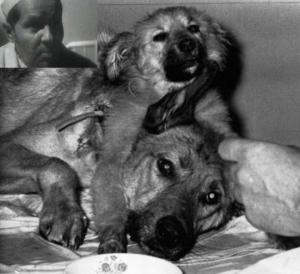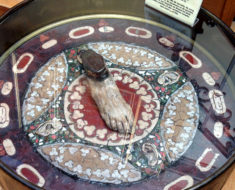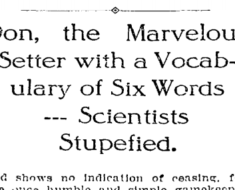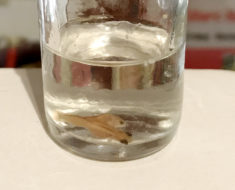If you were the child of Dr. Vladimir Demikhov, a Russian scientist who gained fame in the 1940s and ’50s, a two-headed dog could very well have eaten your homework.
Over the course of 20 years, the controversial Demikhov created at least 20 two-headed animals in his quest to perfect the art of transplantation. Although he sounds like a modern-day Dr. Frankenstein, Demikhov’s work was an attempt to understand how damaged organs can be replaced, or how to create artificial substitutes. His studies would eventually set the stage for similar organ transplants some forty years later.
Demikhov’s early work focused on replacing hearts in dogs with artificial blood pumps, but by 1946 he successfully transplanted a second natural heart in a dog. He simply removed part of a lung to clear some space for the extra ticker, which beat independently of the original heart. Some of the two-hearted dogs managed to live up to five months. The ever-curious surgeon carried on his work by experimenting with just how much work a single heart could do. So rather than add a second heart to a dog, he added a second front end of a pup. This would determine if one heart could pump enough blood for both heads.
Demikhov had a breakthrough with a German Shepherd called Pirat. Pirat lasted 30 days with the front end of a puppy attached to him. The puppy’s head was attached by joining major blood vessels. “The big dog doesn’t understand,” the scientist told a visiting reporter. “He feels some kind of inconvenience, but he doesn’t know what it is. Sometimes the puppy will playfully bite the ear of the big dog and Pirat will shake his head but he never has tried to scratch or kick off the extra head.”

An example of Dr. Demikhov’s experiments with two-headed dogs. His curious face is seen in the upper left corner.
Both heads slept and woke independently, which was a breakthrough for Demikhov because it proved that the head could be attached and retain some level of normalcy. Of course, “normalcy” is all relative. The puppy didn’t need to eat or drink, as it gained all its nourishment from Pirat. In fact, when it did drink, the water went down its throat and out onto the Shepherd’s neck.
After a month of astounding scientists and anyone else who happened to see the two-headed on its regular walks, Pirat developed edema, a condition in which lymphatic fluid infiltrates into connective tissue. Demikhov was forced to perform another surgery to amputate the puppy head. Pirat was returned to normal — or at least as normal as a dog could be after gaining and losing a head.
© Marc Hartzman






